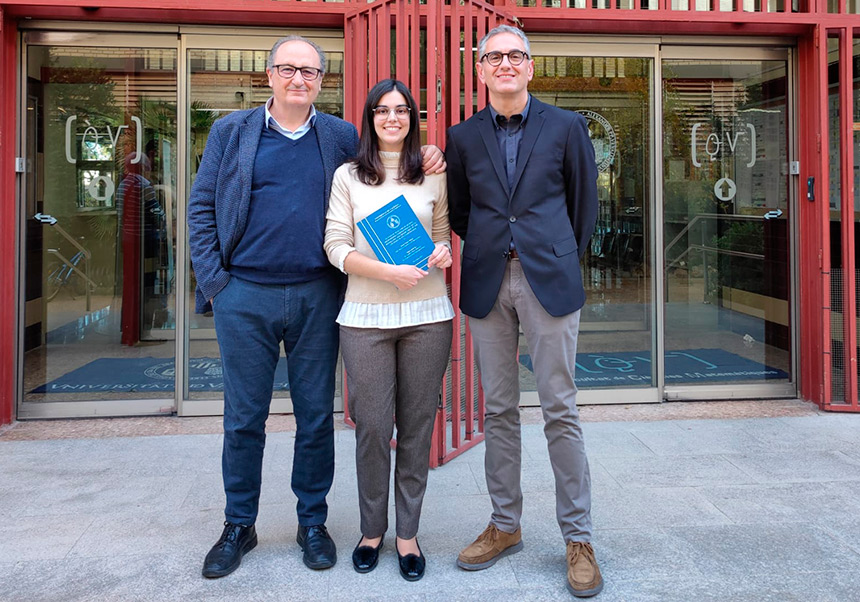Users
Social media
- More details here...
- Address
Parc Científic de la Universitat de València C/
Catedrático Agustín Escardino, 9
46980 Paterna (Valencia) Spain - Email:
iu.i2sysbio@uv.es - Phone:
(+34) 963544810
- Address
Links
Irene Creus-Martí defends her thesis on dynamic modeling of the intestinal microbiota

Investigation & Education
Thesis
Irene Creus-Martí defends her thesis on dynamic modeling of the intestinal microbiota

In this thesis, directed by Andrés Moya Simarro and Francisco José Santonja Gómez, the dynamics of the intestinal microbiota have been studied using Bayesian models. Part of the research results have been published in the journals Mathematical Biosciences and Complexity. The thesis was defended on December 11, 2023.
The intestinal microbiota is related to the health status of its hosts. Recent research highlights the importance of studying time series of the microbiome to analyze its dynamics. However, microbiome data are known to be highly dimensional and compositional, leading to enormous statistical and computational challenges. In the present doctoral thesis, entitled "Bayesian analysis of human microbiome compositional data. Modeling and prediction of the changes in its composition", two models have been developed to analyze time series of the microbiome and extract information about bacterial dynamics. These models do not focus on pairwise interaction, but instead take into account interactions between groups of bacterial taxa using balances. Equilibria are a useful compositional tool for extracting information about the relationship between the group of bacteria present in the numerator and the group of bacteria present in the denominator of the equilibrium. Both models consider that the relative abundance of bacterial taxa at each time point follows a Dirichlet distribution. In the Frequency Balance Model, the relative abundances of microbial taxa were modeled with a Dirichlet distribution with time-varying parameters. It was assumed that these relative abundances can be explained by an autoregressive structure that takes into account the effect of the bacterial community as a whole. This proposal may be useful for understanding the relationships between microorganisms and the identification of key members of the microbial ecosystem that may play an important role. The Bayesian Principal Equilibrium Model is based on modeling a normalized transformation of the observed counts. It is assumed that this transformation can be explained by an autoregressive structure that considers the Dirichlet distribution with time-varying parameters that takes into account the principal equilibria. Finally, these models were used to extract relevant biological information about bacterial dynamics when antibiotics are ingested. A cooperative response of the intestinal microbiota of Blattella germanica to antibiotic treatment was observed.
Irene Creus-Martí carried out her doctoral research in the Evolutionary Genetics group under the supervision of Andrés Moya Simarro, professor of Genetics at the University of Valencia and researcher at the Institute of Integrative Systems Biology I2SysBio (UV-CSIC) and Francisco José Santonja Gómez, professor at the Department of Statistics and Operational Research of the Faculty of Mathematical Sciences (UV). Irene Creus-Martí carried out a research stay at the International Laboratory for Mathematical and Computational Modeling of Complex Systems (Université de la Sorbonne) under the supervision of Jean Daniel Zucker, thanks to a mobility grant from the UV. The qualifying panel was made up of Enriqueta Vercher González (UV), José Antonio Martin Fernández (Universitat de Girona) and Eugeni Belda Cuesta (Institut de Recherche pour le Développement, Paris), who rated the thesis as outstanding.


